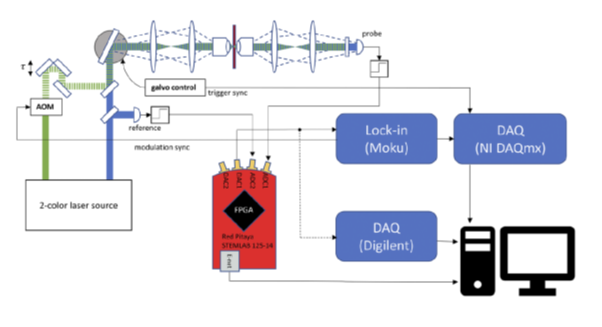Bridging Makers and Engineers: How Red Pitaya and Arduino Power Modern Embedded Learning
- Posted by
 Red Pitaya Team
, October 30, 2025
Red Pitaya Team
, October 30, 2025
.jpg)
Embedded projects at the entry level often emphasize simple functionality such as reading sensors, toggling actuators, or implementing basic control logic. In professional engineering, however, validation and signal analysis are just as critical as implementation. Maker platforms like Arduino excel at control tasks but lack the precision needed to study what happens electrically in the system. Red Pitaya fills this role, providing oscilloscope, spectrum analysis, and waveform generation capabilities on a single device. With 125 MS/s sampling, 14-bit resolution, and DC-60 MHz bandwidth, it delivers laboratory-grade measurements in a compact, affordable platform.


The Maker-to-Engineer Learning Lab combines these two platforms into a unified workflow. Arduino is used to implement sensing and control tasks, while Red Pitaya provides the measurement, visualization, and logging needed to understand the underlying signals. This approach allows learners to experience both the logical and electrical sides of embedded systems design.
Core Lessons and Projects
The lab is built around a sequence of hands-on exercises that gradually increase in complexity. Each begins with an Arduino implementation and is then extended by analyzing the results with Red Pitaya using SCPI commands. This two-step approach ensures that learners not only make their systems function but also understand their behavior at the signal level.


Once the fundamentals are covered, students apply what they have learned in integrated projects that combine sensing, control, and measurement into larger applications. These projects highlight a workflow that mirrors professional practice: Arduino takes the role of system controller, while Red Pitaya serves as the verification and analysis tool, documenting performance and providing deeper insight into how the system operates.
Remote Instrument Control with SCPI over Wi-Fi
Red Pitaya supports SCPI (Standard Commands for Programmable Instruments) over both Wi-Fi and UART.
- SCPI over Wi-Fi allows flexible instrument control during experiments, enabling students to configure acquisitions, trigger measurements, and stream data remotely.
- SCPI over UART provides a wired option with deterministic timing and low overhead, making it suitable for automated test setups and industrial integration.
The identical SCPI command set applies to both interfaces, so students can move from educational labs to production environments without changing workflows.
Teaching Materials
All course content, exercises, and supporting documentation are aligned with Red Pitaya’s official teaching resources. Students and instructors can access additional experiments, tutorials, and practical guides at:
- Red Pitaya Learn
- Full details and kit availability: DigiKey Product Page.
This ensures continuity between the Maker-to-Engineer Lab and a broader set of academic and professional learning materials.
Conclusion
The Maker-to-Engineer Learning Lab provides a combined control-and-measurement platform using Arduino Uno R4 WiFi and Red Pitaya STEMlab 125-14. By pairing embedded implementation with real-time analysis, the course prepares learners for workflows found in research laboratories and industrial environments. The dual communication options—SCPI over Wi-Fi for flexibility and SCPI over UART for robustness—make the skills directly transferable to both educational and professional applications.


.jpg?width=767&name=blog%20featured%20image%20(85).jpg)
.jpg?width=767&name=blog%20featured%20image%20(95).jpg)
.jpg?width=767&name=blog%20featured%20image%20(89).jpg)
.jpg)
